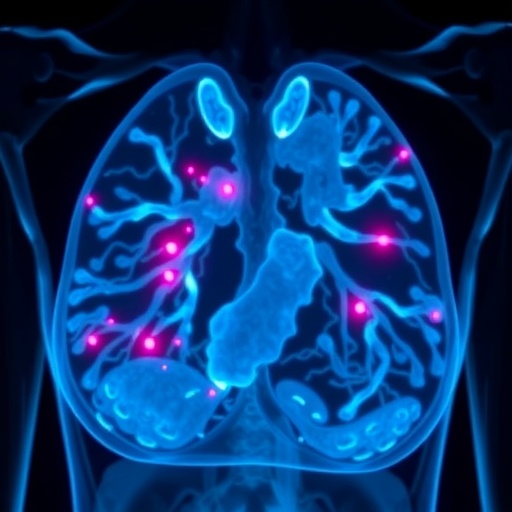A pioneering study by a Korean research team has shed new light on the limitations of artificial intelligence (AI) in detecting invasive breast cancers through mammographic screening. Despite the growing reliance on AI-powered diagnostic tools in radiology, this study reveals that current AI systems may miss a significant proportion of invasive breast cancers—cases where early and accurate identification is critical for patient prognosis and survival. The findings reveal the urgent necessity for ongoing human oversight alongside AI deployment in clinical settings and point toward pathways for refining AI technology to improve accuracy.
Breast cancer remains a leading cause of cancer morbidity and mortality among women globally. Diagnostic strategies often classify breast cancer into ductal carcinoma in situ (DCIS), considered stage 0, and invasive cancers spanning stages 1 through 4. Prior assessments of AI’s performance in mammography have reported an overall false-negative rate approaching 19.4% for all breast cancer types. However, the performance of these AI algorithms specifically in detecting invasive breast cancers— which directly threaten patient survival when diagnosis is delayed—has been insufficiently characterized. Addressing this critical gap, Korean investigators undertook an extensive analysis employing a commercially available AI diagnostic program known as Lunit Insight MMG.
The team, anchored at the Breast Center of Korea University College of Medicine, analyzed a robust dataset comprising 1,097 breast cancer cases diagnosed between 2014 and 2020. The Lunit Insight MMG program, developed domestically, utilizes sophisticated deep learning architectures trained on vast datasets of mammographic images. Despite its advanced design, the AI system missed detecting 14% of invasive cancer cases, underscoring a meaningful diagnostic blind spot. This noteworthy performance shortfall raises significant clinical concerns, particularly with respect to AI’s reliability as a standalone screening solution.
Disaggregating the data according to molecular subtype, the AI missed 17.2% of luminal-type cancers, 14.5% of triple-negative breast cancers, and 9% of HER2-positive cancers. These findings are particularly striking given the aggressive biology and variable treatment approaches associated with each subtype. The luminal type, often hormone receptor-positive and less aggressive in some cases, still experienced a high miss rate by AI. The triple-negative subtype, linked with poorer prognoses and limited targeted therapies, also suffered considerable under-detection. Interestingly, HER2-positive cancers—a subtype frequently associated with characteristic imaging features—were relatively better identified, though misses still occurred.
Further pathological and clinical insights from the study revealed that the invasive cancers overlooked by AI predominantly occurred in younger women and typically exhibited smaller tumor sizes, often 2 centimeters or less in diameter. These tumors also tended to present with lower histologic grades and demonstrated fewer metastatic lymph nodes. Additionally, they showed low Ki-67 proliferation indices, indicating slower cellular proliferation rates. Anatomically, these tumors were often located outside traditional glandular regions of the breast, complicating detection. Notably, many of these cancers fell into BI-RADS category 4, indicating suspicious abnormalities warranting close investigation.
From an imaging perspective, several factors were identified as primary drivers of missed detection by AI. Dense breast tissue—a known impediment to mammographic sensitivity—was a predominant obstacle. Non-glandular tumor locations, structural distortions in breast architecture, and the presence of microcalcifications were additional impediments that confounded the AI’s pattern recognition algorithms. These results highlight the complex interplay between tumor biology, breast tissue composition, and imaging features that influence AI’s interpretive performance. Despite these challenges, reassuringly, 61.7% of the missed cancers were deemed detectable by experienced radiologists.
Professor Sungeun Song emphasized the evolving but complementary role of AI in breast cancer screening. She stated, “While AI demonstrates strong capabilities in detecting breast cancer, our findings underscore that it cannot entirely replace human expertise. Radiologists’ interpretive skills remain crucial in addressing AI’s blind spots, especially for invasive cancers with subtle imaging features.” This comment reflects a growing consensus in medical imaging that AI should augment rather than supplant human judgment, functioning as a collaborative tool to enhance diagnostic accuracy.
Understanding the specific tumor and imaging characteristics associated with AI’s misses is pivotal for multiple reasons. On one hand, this knowledge can guide radiologists to pay heightened attention to cases where AI flags are absent but clinical suspicion persists. On the other hand, it directs AI researchers and developers toward refining algorithms, incorporating advanced features to better identify subtle abnormalities in dense breast tissue or atypical tumor locations. These improvements may involve integrating multi-modal imaging data or enhancing the training datasets to encompass a broader spectrum of tumor presentations.
The study appeared in the highly regarded journal Radiology, which is recognized for its rigorous peer review and high impact factor of 15.4. The publication date is June 24, 2025, marking the report as a recent and significant contribution to the field of radiologic imaging. The detailed findings were made available under the title “Invasive Breast Cancers Missed by AI Screening of Mammograms,” accessible via DOI 10.1148/radiol.242408.
This research adds crucial nuance to the evolving narrative around AI in medical diagnostics. While AI programs hold promise for enhancing screening throughput and reducing reader fatigue, their limitations—particularly related to detecting invasive cancers in challenging patient subsets—must be acknowledged and actively addressed. Continuous education, close collaboration between radiologists and AI developers, and iterative refinement of AI algorithms are essential to elevate the standard of care.
In conclusion, the Korean research underscores a vital paradigm: AI in breast cancer screening is a powerful tool that should be harnessed with caution and complemented by expert human interpretation. The detailed characterization of AI missed cases challenges the medical community to develop smarter, more adaptive AI systems that can overcome current diagnostic hurdles, ultimately improving early breast cancer detection and patient outcomes on a global scale.
Subject of Research: People
Article Title: Invasive Breast Cancers Missed by AI Screening of Mammograms
News Publication Date: 24-Jun-2025
Web References: http://dx.doi.org/10.1148/radiol.242408
Image Credits: KU Medicine
Keywords: Artificial intelligence, Mammography, Breast cancer, Invasive cancer, Diagnostic imaging, Lunit Insight MMG, Radiology, AI limitations, Tumor detection, Breast cancer screening, Dense breast tissue, Imaging analysis




